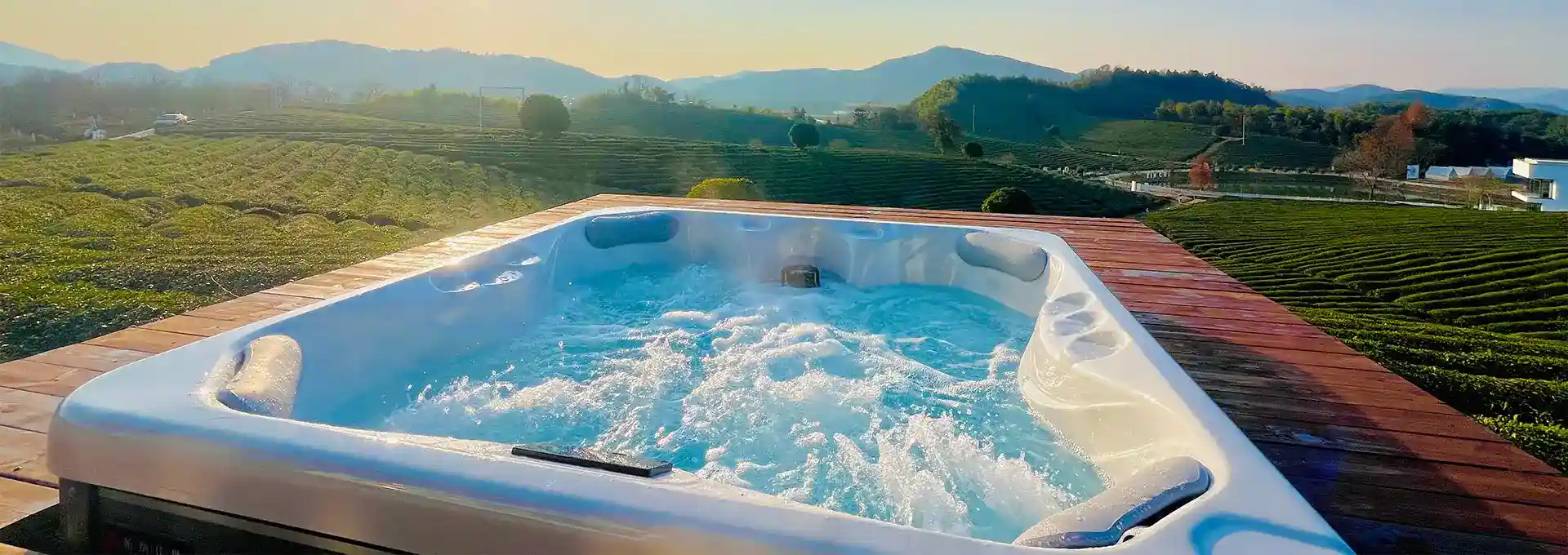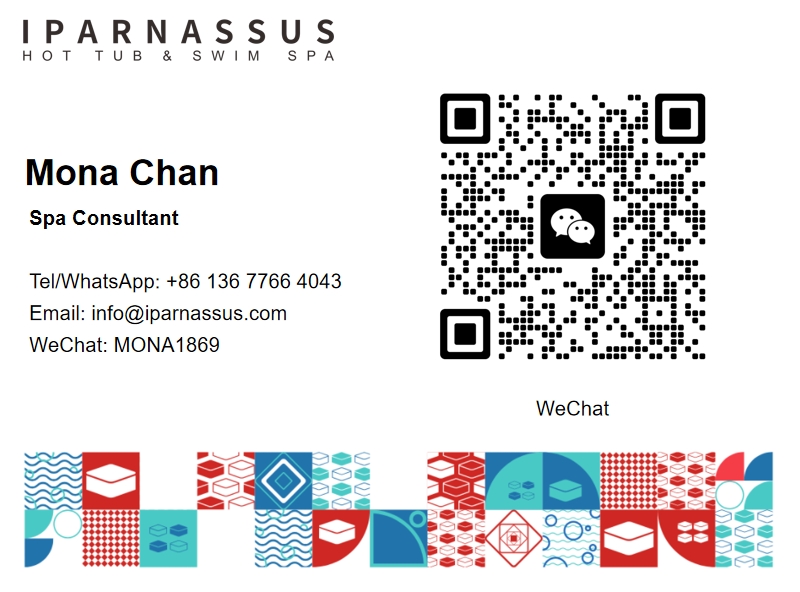How Do I Choose the Right Outdoor Swimming Spa Cover or Barrier to Comply With Safety Regulations?
2025-02-24 14:19:59
Choosing the right outdoor swim spa cover or barrier is crucial for ensuring the safety of your pool area and complying with local regulations. Safety should always be the top priority when it comes to swimming spas, especially if you have children or pets. This article will guide you through the process of selecting an appropriate cover or barrier that not only meets safety standards but also enhances the overall functionality and aesthetics of your outdoor swimming spa.
What are the different types of swimming spa covers available?
When it comes to swim spa covers, there are several types to choose from, each with its own set of advantages and considerations. Understanding these options will help you make an informed decision based on your specific needs and preferences.
1. Solid Safety Covers: These are among the most popular and effective options for swimming spa safety. Solid safety covers are typically made of durable materials like reinforced vinyl or polypropylene. They're designed to support a significant amount of weight, making them ideal for preventing accidental falls into the spa. These covers are usually custom-fitted to your spa's dimensions and secured with straps and springs or a track system around the spa's perimeter.
Advantages of solid safety covers include:
- Excellent protection against debris and sunlight
- Ability to support the weight of a child or pet
- Long-lasting and durable
- Can help reduce evaporation and chemical loss
2. Mesh Safety Covers: Similar to solid covers in terms of safety features, mesh covers are made of a tightly woven fabric that allows water to pass through while blocking debris. This design helps prevent water accumulation on top of the cover, which can be beneficial in areas with heavy rainfall or snowfall.
Benefits of mesh safety covers include:
- Lighter and easier to handle than solid covers
- Self-draining, preventing water buildup
- Allow some sunlight to penetrate, which can help maintain water temperature
- Generally more affordable than solid covers
3. Automatic Covers: These are the most convenient option for swimming spa owners. Automatic covers operate on a track system and can be opened or closed with the push of a button or turn of a key. While they're typically more expensive than manual covers, they offer unparalleled ease of use and safety.
Advantages of automatic covers include:
- Effortless operation
- Excellent safety features when properly closed
- Can significantly reduce heating and chemical costs
- Sleek appearance that enhances the spa's aesthetics
4. Thermal Covers: While not primarily designed for safety, thermal covers play a crucial role in maintaining water temperature and reducing energy costs. They're typically made of foam core material wrapped in vinyl and can be used in conjunction with safety covers for optimal protection and efficiency.
When selecting a swimming spa cover, consider factors such as climate, frequency of use, maintenance requirements, and budget. It's also essential to ensure that the cover you choose meets local safety regulations and standards set by organizations like the American Society for Testing and Materials (ASTM).
What safety features should I look for in a swimming spa barrier?
Swimming spa barriers are an essential component of pool safety, especially in areas where local regulations require them. When choosing a barrier for your outdoor swim spa, there are several key safety features to consider:
1. Height: The barrier should be tall enough to prevent easy access to the spa area. Most safety guidelines recommend a minimum height of 4 feet (1.2 meters), but some localities may require taller barriers. Check your local regulations to ensure compliance.
2. Gaps and Openings: The barrier should not have any gaps or openings that could allow a child to pass through. Generally, openings should not be larger than 4 inches (10 cm) in diameter. This includes the space between the bottom of the barrier and the ground.
3. Climb Resistance: The barrier should be designed to prevent climbing. Avoid using horizontal bars or other features that could serve as footholds. If using a fence with vertical bars, ensure they are spaced close enough to prevent a child from squeezing through.
4. Self-Closing and Self-Latching Gates: Any gates in the barrier should be self-closing and self-latching. The latch should be positioned out of reach of young children, typically at least 54 inches (137 cm) from the ground.
5. Durability: The barrier should be made of sturdy materials that can withstand environmental factors such as wind, rain, and UV exposure. Common materials include aluminum, wrought iron, or high-quality mesh.
6. Visibility: While the barrier needs to be secure, it should also allow for clear visibility of the spa area. This is important for supervision purposes and can also enhance the overall aesthetics of your outdoor space.
7. Removable Mesh Fencing: This option provides flexibility, allowing you to remove the barrier when adult supervision is constant and reinstall it when needed. Ensure that the mesh is strong enough to prevent tearing and that the support poles are securely anchored.
8. Alarm Systems: While not a physical barrier, pool alarms can provide an additional layer of safety. These can be installed on gates, in the water, or as wearable devices for children.
When selecting a barrier, consider the layout of your outdoor space and how the barrier will integrate with existing structures. Some homeowners opt for a combination of different barrier types to create a comprehensive safety system. For example, you might use a fence around the perimeter of the property and a removable mesh fence directly around the spa.
It's crucial to regularly inspect and maintain your chosen barrier to ensure it remains effective. Check for any damage, wear, or shifts in the ground that might compromise its safety features. Additionally, educate all household members and guests about the importance of keeping gates closed and latched at all times.
Remember that while barriers are an essential safety feature, they should never replace active adult supervision when children are in or around the swimming spa area.
How do I ensure my swimming spa cover or barrier meets local regulations?
Ensuring that your swim spa cover or barrier complies with local regulations is crucial for both safety and legal reasons. Here's a comprehensive guide to help you navigate this process:
1. Research Local Regulations: Start by researching the specific regulations in your area. Swimming spa safety requirements can vary significantly between different states, counties, and even municipalities. Check with your local building department, health department, or zoning office for the most up-to-date information.
2. Understand National Standards: While local regulations take precedence, it's also helpful to be aware of national standards. Organizations such as the Consumer Product Safety Commission (CPSC) and the American Society for Testing and Materials (ASTM) provide guidelines that are often incorporated into local codes.
3. Consult with Professionals: Consider consulting with a professional pool contractor or safety expert who is familiar with local regulations. They can provide valuable insights and help ensure your cover or barrier meets all necessary requirements.
4. Obtain Proper Documentation: When purchasing a swimming spa cover or barrier, ensure that it comes with proper documentation certifying its compliance with safety standards. This documentation may be required during inspections or if you ever need to prove compliance.
5. Schedule an Inspection: In many areas, you may need to schedule an inspection with local authorities to verify that your swimming spa cover or barrier meets regulations. This is often required before you can obtain a certificate of occupancy or use permit for your spa.
6. Regular Maintenance and Checks: Compliance isn't a one-time event. Regularly inspect and maintain your cover or barrier to ensure it continues to meet safety standards. Keep records of these inspections and any maintenance performed.
7. Stay Informed About Changes: Safety regulations can change over time. Stay informed about any updates to local codes and be prepared to make necessary adjustments to your cover or barrier if required.
8. Consider Additional Safety Measures: While ensuring compliance with minimum standards is essential, consider going above and beyond to maximize safety. This might include installing additional safety features like alarms or implementing strict safety rules for spa use.
9. Educate Family Members and Guests: Make sure everyone who uses the spa area is aware of the safety features and how to properly use them. This includes understanding how to secure covers and close gates.
10. Address Unique Features: If your swimming spa has unique features or is part of a larger pool complex, ensure that your safety measures address all aspects of the water area. This might include separate barriers for different sections or specialized covers for unique spa shapes.
Remember that while complying with regulations is important, the ultimate goal is to create a safe environment for everyone who uses or is around your swimming spa. Don't hesitate to go beyond the minimum requirements if you feel it will enhance safety.
By following these steps and maintaining a proactive approach to safety, you can ensure that your swim spa cover or barrier not only meets local regulations but also provides the highest level of protection possible for your family and guests.
For more information on swim spa installations and our products, please feel free to contact us at info@iparnassus.com.
References
- Consumer Product Safety Commission. "Safety Barrier Guidelines for Residential Pools"
- American Society for Testing and Materials. "ASTM F1346-91: Standard Performance Specification for Safety Covers and Labeling Requirements for All Covers for Swimming Pools, Spas and Hot Tubs"
- National Swimming Pool Foundation. "Pool & Spa Operator Handbook"
- Association of Pool & Spa Professionals. "ANSI/APSP/ICC-7 2013 American National Standard for Suction Entrapment Avoidance in Swimming Pools, Wading Pools, Spas, Hot Tubs, and Catch Basins"
- U.S. Department of Housing and Urban Development. "Barriers for Residential Swimming Pool, Spa and Hot Tub Safety"
- World Health Organization. "Guidelines for Safe Recreational Water Environments: Swimming Pools and Similar Environments"
- International Association of Certified Home Inspectors. "Swimming Pool Inspection"
- National Drowning Prevention Alliance. "Layers of Protection"
- Pool Safely. "Safety Barrier Guidelines for Residential Pools"
- American Red Cross. "Home Pool Safety"



